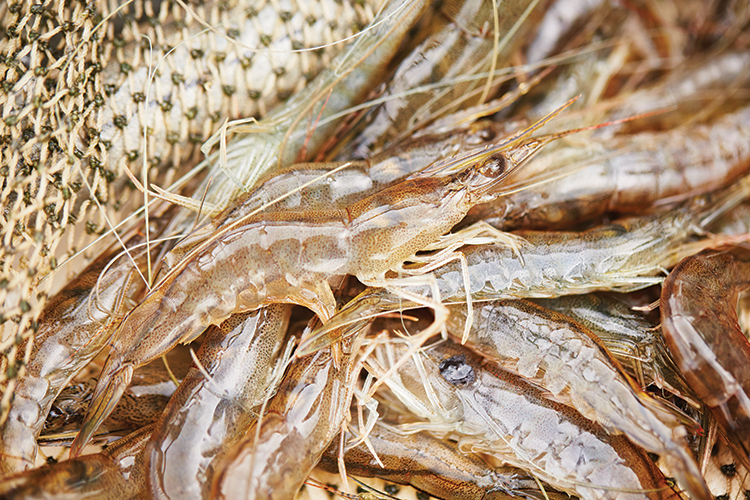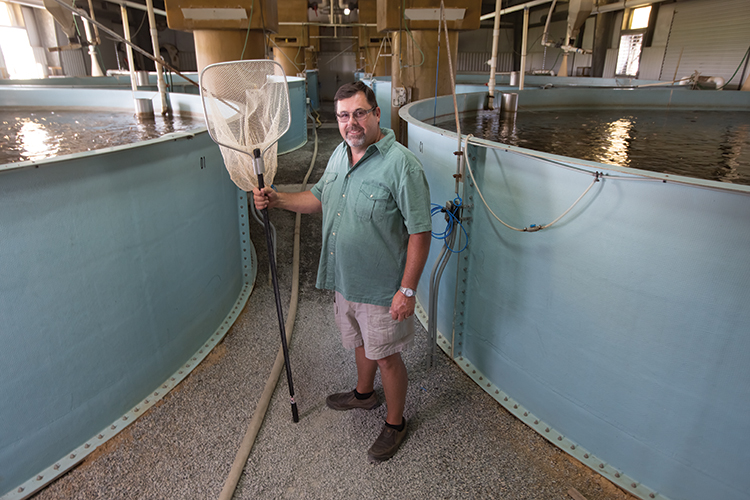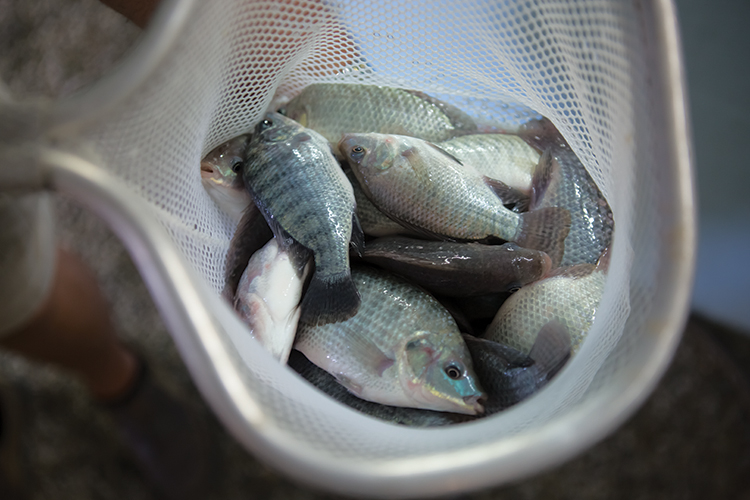Home > North Carolina > North Carolina Crops & Livestock > North Carolina’s Broad Aquaculture Industry
North Carolina’s Broad Aquaculture Industry
In partnership with: North Carolina Department of Agriculture & Consumer Services

With more Americans learning the nutritional value of seafood and shellfish, and global consumption continually edging up each year, the world is North Carolina’s oyster. In 2015, the state’s aquaculture industry added more than $58 million to the state’s economy.
“With a growing population in the years to come, aquaculture – especially in North Carolina – will continue to grow to meet our country’s seafood demand,” says Pete Anderson, agribusiness development and aquaculture consultant for the North Carolina Department of Agriculture and Consumer Services (NCDA&CS).
Anderson notes North Carolina’s production numbers have held steadfast despite some reduction in the number of farms. The reason: The state’s aquaculture industry’s success is tied to a diverse climate and abundant water resources, which allow for a wide variety of species to be produced.

Location, Location, Location
The cool climate and elevation of North Carolina’s western mountainous region, for example, have led to the largest mountain trout industry east of the Mississippi River. In 2015, the state’s trout farms produced some 5 million pounds of the fish for consumption.
“Because of our elevation and also because so much of western North Carolina is owned by the public, we have cool and very clean water. Most of the trout farms are located on streams that flow directly from these public lands which are void of any housing, industry or agriculture,” says Howard Brown, who manages Carolina Mountain Trout in Andrews.
In addition to the state’s trout farms and fingerling hatcheries, North Carolina boasts three processing facilities, which Brown says contributed to the industry’s growth.
![North Carolina aquaculture [INFOGRAPHIC]](https://eadn-wc01-4177395.nxedge.io/wp-content/uploads/2020/02/Screen-Shot-2016-11-16-at-11.08.12-AM.jpg) “When we started looking at the trout industry back in the 1980s, we were producing some of the trout feed being fed in the mountains. At that time, there were several small processors throughout the industry, but none of them large enough to send trucks out of the general area,” he says. “Most of the fish were marketed locally – the farthest market might have been Atlanta or Charlotte. For the industry to expand, we thought a larger processing facility might help. It has certainly been a mixed bag, but overall I feel that it has helped to stabilize the industry.”
“When we started looking at the trout industry back in the 1980s, we were producing some of the trout feed being fed in the mountains. At that time, there were several small processors throughout the industry, but none of them large enough to send trucks out of the general area,” he says. “Most of the fish were marketed locally – the farthest market might have been Atlanta or Charlotte. For the industry to expand, we thought a larger processing facility might help. It has certainly been a mixed bag, but overall I feel that it has helped to stabilize the industry.”
Debra Sloan, agribusiness development and aquaculture consultant for NCDA&CS,
says another reason for the trout industry’s continued success is its innovative production practices.
![North Carolina aquaculture [INFOGRAPHIC]](https://eadn-wc01-4177395.nxedge.io/wp-content/uploads/2020/02/Screen-Shot-2016-11-16-at-11.08.32-AM.jpg) “The trout industry in the mountains has been here for more than 40 years,” she says. “This mature industry has developed strategic farm management programs that allow them to consistently produce high-quality trout for both food fish and recreational fish.
“The trout industry in the mountains has been here for more than 40 years,” she says. “This mature industry has developed strategic farm management programs that allow them to consistently produce high-quality trout for both food fish and recreational fish.
“Recreational fish are a growing market, proving quite successful to some producers. The food fish grown for specific markets has grown at a steady rate over the last decade, ensuring the trout producers they’ll always be able to sell their fish.”
 A Steady Flow
A Steady Flow
In eastern North Carolina, the warm climate and recirculating aquaculture systems (RAS) – a technology that allows production in water-limited areas with a smaller indoor footprint – have helped the state’s tilapia and sturgeon industries grow as has demand from Asia, Canada and the northern half of the U.S. Randy Gray, North Carolina Aquaculture Association president and owner of Circle G Farm near Pikeville, says the industry has also been aided by the cooperative relationship with North Carolina State University.
“The university is a big asset to the aquaculture industry,” he says. “We’re on a first-name basis with aquaculture professors and researchers there. We can call and bounce ideas off them. It’s unbelievable how all of these entities have come together.”
![North Carolina aquaculture [INFOGRAPHIC]](https://eadn-wc01-4177395.nxedge.io/wp-content/uploads/2020/02/Screen-Shot-2016-11-16-at-11.08.50-AM.jpg) Gray’s farm, which produces tilapia, is part of Fresh Keepers Cooperative Inc., a group of tilapia farmers producing more than 1.5 million pounds of fish annually.
Gray’s farm, which produces tilapia, is part of Fresh Keepers Cooperative Inc., a group of tilapia farmers producing more than 1.5 million pounds of fish annually.
The moderate climate in eastern and central North Carolina has also played a role in the development and growth of other species, such as catfish, hybrid striped bass, prawns and sturgeon, which is raised primarily for caviar and netted nearly half a million dollars in 2015.
“Aquaculture does well in North Carolina primarily because of the climate,” Gray says. “Catfish, for example, are grown outside, and North Carolina’s warm climate extends the growing season.”




looking to start small outdoor RAS system but can’t determine what fish to stock
bckyard aquaponics RAS want to start this year outdoors